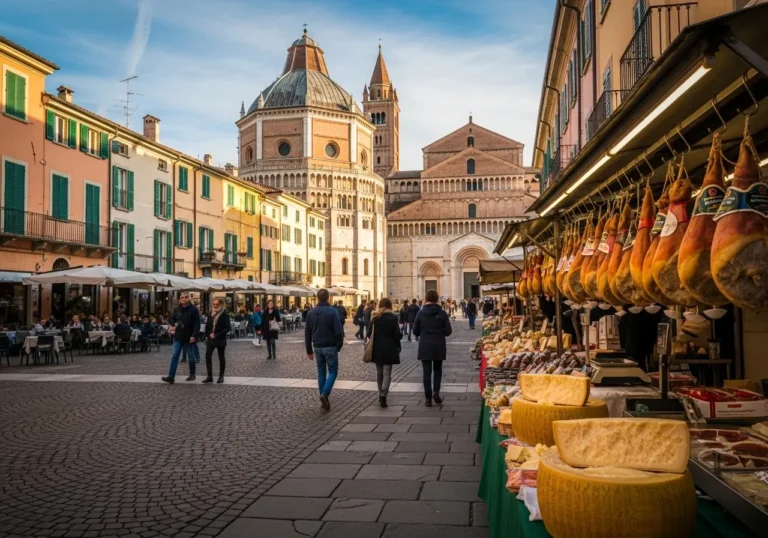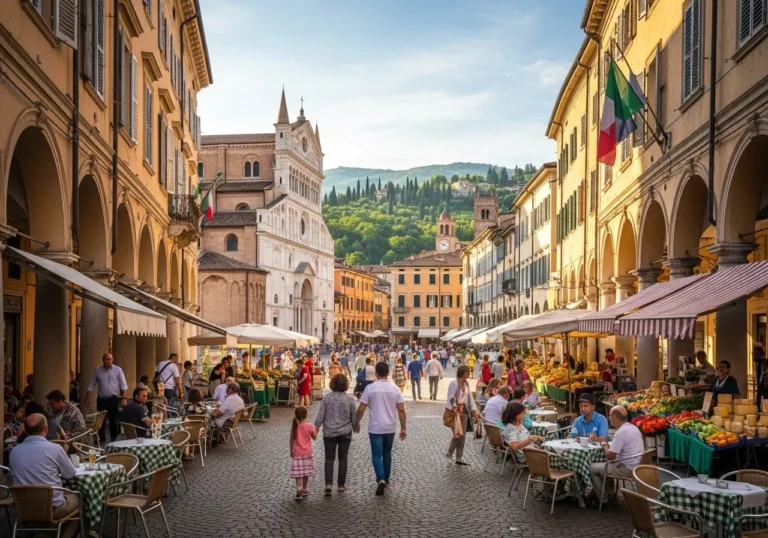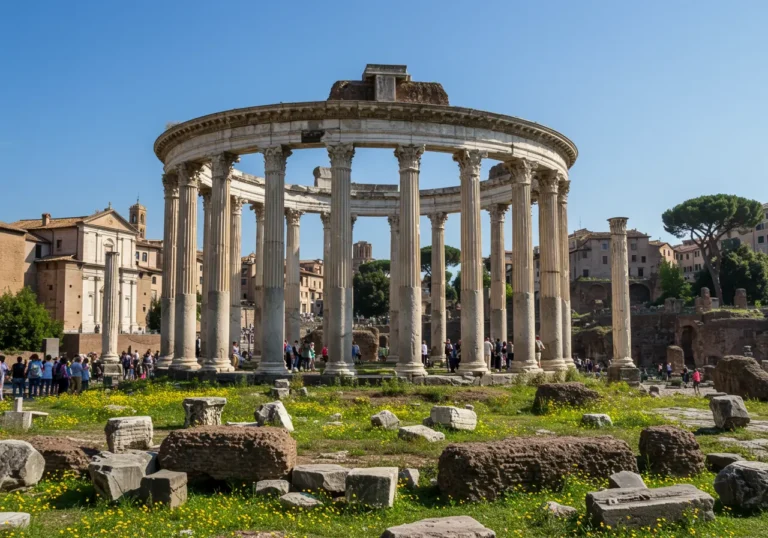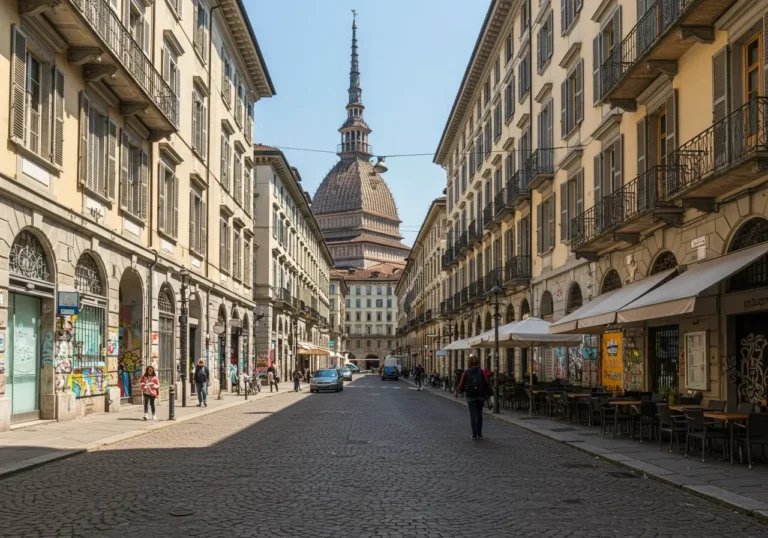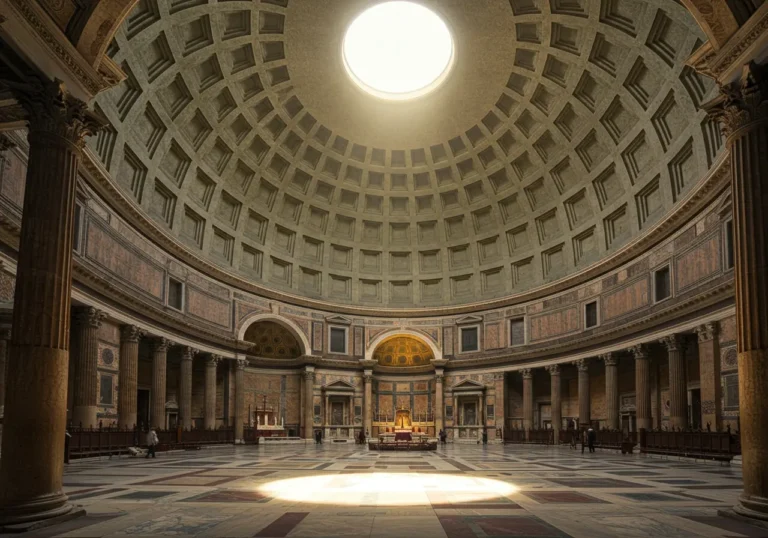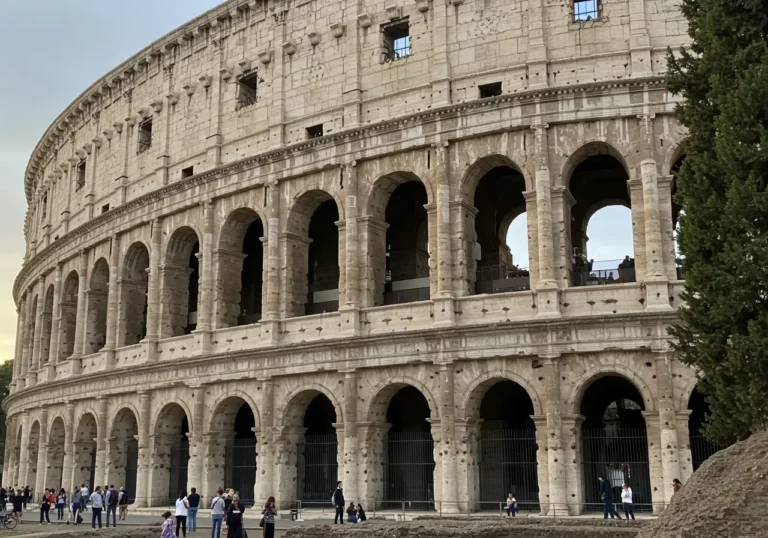Top 10 Places to Visit in Rome
Introduction
Overwhelmed by planning the perfect Rome adventure? You’re not alone. With over 2,000 years of history packed into every cobblestone street, choosing where to spend your precious vacation time can feel impossible. This comprehensive guide reveals Rome’s must-see destinations that will transform your trip from stressful planning into an unforgettable Italian experience.
As a travel strategist who has explored Italy’s eternal city countless times, guiding travelers through its ancient wonders and hidden gems, I understand exactly what makes a Rome visit extraordinary. Whether you’re drawn to ancient ruins, Renaissance masterpieces, or simply the perfect gelato spot, this guide covers everything you need.
We’ll explore the top cities for first-timers, essential cultural landmarks, practical travel tips, and detailed itineraries that maximize your time while minimizing tourist traps and overwhelming crowds.
Table of Contents
Why Visit Italy
Italy offers an unmatched combination of culture, convenience, and variety that makes it perfect for any type of traveler:
• Offers world-class art, history, and cuisine – From Michelangelo’s masterpieces to authentic carbonara, every experience is world-renowned • Easy transport between cities and regions – Efficient trains and buses connect major destinations seamlessly
• Perfect for romantic getaways, family trips, or adventure seekers – Whether you want candlelit dinners, kid-friendly activities, or hiking adventures, Italy delivers
Choosing the Right Destination
Selecting the right destinations can make or break your Italian adventure, depending on your travel style and interests.
Best Cities for First-Time Travelers: Rome, Florence, Venice
Rome serves as the perfect introduction to Italy’s layered history, offering iconic landmarks like the Colosseum alongside vibrant neighborhoods filled with trattorias and gelaterias. Florence provides Renaissance art overload with the Uffizi Gallery and Duomo, while Venice delivers romantic canal experiences and unique island culture that exists nowhere else on earth.
Nature Escapes: Dolomites, Lake Como, Amalfi Coast
Beyond the cities, Italy’s natural beauty astounds visitors with dramatic mountain ranges, pristine lakes, and stunning coastlines. The Dolomites offer world-class hiking and skiing, Lake Como provides elegant villa retreats with Alpine backdrops, and the Amalfi Coast delivers Mediterranean glamour with cliff-top towns and crystal-clear waters.
Substitutions: Swap Cinque Terre with Sardinia for Beaches
While Cinque Terre remains popular, savvy travelers are discovering Sardinia’s pristine beaches, turquoise waters, and authentic Italian island culture without the overwhelming crowds. Sardinia offers better value, more space to relax, and equally stunning coastal scenery with added archaeological sites and unique local cuisine.
Planning & Preparation
Proper preparation transforms a good Rome trip into an exceptional one, saving money and avoiding common tourist frustrations.
Travel Essentials: Packing tips, local SIM cards, transport passes
Pack comfortable walking shoes, layers for changing weather, and a portable phone charger for constant photo opportunities. Purchase a local SIM card or international plan for navigation and translation apps. Invest in a Roma Pass for public transport and skip-the-line museum access, which pays for itself after visiting just two major attractions.
Accommodation Tips: Boutique hotels, agriturismos, or Airbnb
Choose accommodations based on your priorities: boutique hotels near major sites for convenience, agriturismos outside the city for authentic experiences with local families, or Airbnb apartments for longer stays and cooking opportunities. Book early for better rates and prime locations, especially during peak season from April through October.
Budgeting Basics: How much to set aside daily for food, attractions, and transport
Budget approximately €80-120 per day for mid-range travel, including €25-40 for meals, €15-25 for attractions, €10-15 for transport, and €30-40 for accommodation. Street food and aperitivo can stretch your dining budget, while city passes reduce attraction costs significantly when visiting multiple sites.
Top 10 Places to Visit in Rome

Colosseum
The Colosseum stands as Rome’s most iconic symbol, where gladiators once fought for their lives before 50,000 spectators. This architectural marvel, completed in 80 AD, showcases Roman engineering genius with its complex underground tunnels, elaborate lifting systems, and innovative crowd management features. Visit early morning or late afternoon to avoid crowds and harsh lighting for photos. Book skip-the-line tickets online to maximize your time exploring the arena floor and upper tiers, where you can imagine the roar of ancient crowds and feel the weight of history.

Roman Forum
The Roman Forum served as the beating heart of the ancient empire, where senators debated, merchants traded, and citizens gathered for over 1,000 years. Walking through these ruins transports you to Julius Caesar’s time, passing temples, basilicas, and triumphal arches that once showcased Rome’s power to the world. The Via Sacra, or Sacred Way, leads you past the Temple of Vesta, House of the Vestal Virgins, and Basilica of Maxentius. Hire an audio guide or join a tour to fully appreciate the historical significance of each crumbling column and weathered stone that witnessed the rise and fall of civilization.

Pantheon
The Pantheon represents the pinnacle of Roman architectural achievement, with its perfect dome remaining the world’s largest unreinforced concrete structure after nearly 2,000 years. Originally built as a temple to all gods, this marvel now serves as a church and tomb for notable figures including Renaissance master Raphael. The central oculus, or eye, provides the only natural light source, creating dramatic beams that move across the interior throughout the day. Visit during different times to witness how changing light transforms the space, and look up through the opening to see weather patterns and birds passing overhead in this unique architectural experience.

Trevi Fountain
The Trevi Fountain captivates millions of visitors with its Baroque grandeur and the legendary promise that tossing a coin ensures your return to Rome. Designed by Nicola Salvi and completed in 1762, this masterpiece depicts Neptune’s chariot pulled by horses through rocky landscapes, with intricate sculptures telling stories of abundance and health. The fountain collects over €3,000 daily in coins, which are donated to charity. Visit early morning before 8 AM or late evening after 10 PM to avoid overwhelming crowds and capture better photos. The fountain’s dramatic nighttime illumination creates a magical atmosphere that enhances the romantic experience of this bucket-list destination.

Piazza Navona
Piazza Navona showcases Baroque Rome at its finest, built on the footprint of Emperor Domitian’s ancient stadium where chariot races once thrilled spectators. Three magnificent fountains anchor this elongated square, with Bernini’s Fountain of Four Rivers serving as the centerpiece, representing the Nile, Ganges, Danube, and Rio de la Plata through powerful sculpted figures. Street artists, musicians, and painters create a vibrant atmosphere while outdoor cafés offer perfect people-watching opportunities. The surrounding palaces and churches, including Sant’Agnese in Agone with its dramatic twin bell towers, frame this living masterpiece where Romans and visitors gather day and night to experience the city’s social heartbeat.

Vatican City
Vatican City, the world’s smallest independent state, houses the spiritual and administrative heart of the Catholic Church within ancient walls that have witnessed centuries of papal history. This 121-acre enclave contains some of humanity’s greatest artistic treasures, from St. Peter’s Basilica to the Sistine Chapel, all while serving as home to the Pope and seat of global Catholic governance. The Vatican Gardens, papal apartments, and various museums create a unique blend of religious significance and cultural magnificence. Plan an entire day to properly explore this UNESCO World Heritage site, and consider booking early morning or evening tours to avoid the massive crowds that can overwhelm the narrow corridors and sacred spaces.

St. Peter’s Basilica
St. Peter’s Basilica stands as one of Christianity’s holiest sites and a masterpiece of Renaissance architecture, built over the tomb of Saint Peter himself. Michelangelo’s dome dominates Rome’s skyline while his only signed work, the Pietà, moves visitors to tears with its perfect blend of sorrow and serenity carved from a single block of marble. Bernini’s magnificent baldachin rises above the papal altar, while his colonnade embraces visitors in St. Peter’s Square like “the maternal arms of Mother Church.” Climb the 551 steps to the cupola for breathtaking views across Rome, and attend papal audiences on Wednesdays or special masses to experience this living cathedral in its full spiritual glory.

Vatican Museums
The Vatican Museums contain one of the world’s largest and most important art collections, accumulated by the Catholic Church over centuries of patronage and preservation. These 54 galleries showcase everything from ancient Roman sculptures to Renaissance frescoes, Egyptian mummies to contemporary works, creating an overwhelming feast for art lovers and casual visitors alike. The Gallery of Maps, Raphael Rooms, and Pinacoteca each deserve hours of exploration, while the spiral staircase and various courtyards provide architectural marvels between artistic treasures. Book skip-the-line tickets and consider guided tours to navigate efficiently through this labyrinthine complex that could easily consume several days if you attempted to see everything at a leisurely pace.

Sistine Chapel
The Sistine Chapel serves as both the Pope’s private chapel and the sacred space where cardinals elect new pontiffs, beneath Michelangelo’s breathtaking ceiling frescoes that redefined artistic possibility. Painted between 1508-1512, the ceiling depicts scenes from Genesis, including the iconic Creation of Adam where God’s finger nearly touches man’s, while the altar wall features the dramatic Last Judgment completed decades later. The chapel’s acoustics were designed for sacred music, and visitors must observe strict silence and no-photography rules that preserve the spiritual atmosphere. This culmination of any Vatican visit requires patience with crowds and security procedures, but witnessing these masterpieces in their intended setting creates an unforgettable encounter with human creative genius.

Spanish Steps
The Spanish Steps create Rome’s most elegant gathering place, where 135 travertine steps cascade down from Trinità dei Monti church to the boat-shaped Barcaccia fountain in Piazza di Spagna below. Built in the 1720s to connect the church with the Spanish Embassy, these steps have become a symbol of Roman dolce vita where visitors rest, socialize, and watch the world go by.
The area surrounding the steps features luxury boutiques along Via del Condotti, charming cafés, and the house where poet John Keats spent his final days, now a museum dedicated to Romantic literature. Visit during spring when azaleas bloom along the steps, creating a natural floral carpet, or in the evening when golden light bathes the travertine and creates perfect conditions for memorable photographs.
Travel Tips
Avoiding Travel Stress: “Book tickets online in advance,” “Travel off-season”
Booking major attractions online eliminates waiting in long lines and guarantees entry during peak times when many sites sell out completely. The Colosseum, Vatican Museums, and popular restaurants require advance reservations, especially from April through October. Traveling off-season (November through March, excluding holidays) offers significant advantages including lower prices, smaller crowds, and more authentic interactions with locals who have more time to share their knowledge and recommendations.
Tool Recommendations: Google Maps offline, Omio app, Trenitalia
Download Google Maps offline for Rome before arriving to navigate without using international data, marking favorite restaurants and attractions for easy reference. The Omio app simplifies booking trains, buses, and flights across Europe with real-time schedules and mobile tickets. Trenitalia’s official app offers the best prices for Italian train travel and allows seat reservations on high-speed routes, while also providing platform information and delay notifications.
Safety & Storage: “Keep money belts,” “Use lockers in train stations”
Wear money belts or hidden pouches for passports, extra cash, and cards, as pickpockets target tourist areas including the Colosseum, Vatican, and crowded public transport. Major train stations offer secure luggage storage facilities perfect for day trips or storing bags between hotel checkouts and flights. Stay aware of common scams like fake petition signers, friendship bracelet sellers, and distraction techniques used near major attractions, and trust your instincts if situations feel uncomfortable.
Experience Variations
Luxury Travel: Michelin dining, five-star stays
Rome’s luxury scene offers world-class experiences including Michelin-starred restaurants where innovative chefs reimagine traditional Roman cuisine with premium ingredients and artistic presentation. Five-star hotels like Hotel de Russie and The First Roma provide impeccable service, prime locations, and exclusive amenities such as private Vatican tours, personal shopping experiences, and rooftop terraces overlooking ancient monuments. Private guides, chauffeur services, and VIP access to normally restricted areas create unforgettable memories for travelers seeking the ultimate Roman experience.
Budget-Friendly: Street food tours, hostels, free walking tours
Rome offers incredible value through street food like supplì, trapizzino, and gelato that costs a fraction of restaurant prices while providing authentic local flavors. Modern hostels provide clean, safe accommodation with social atmospheres perfect for meeting fellow travelers and sharing experiences. Free walking tours, operated on a tip-based system, offer excellent introductions to Roman history and neighborhoods, while many churches, piazzas, and outdoor attractions cost nothing to visit and provide endless entertainment.
FAQs
“Is it safe to travel in Italy?”
Italy maintains excellent safety standards for tourists, with violent crime against visitors being extremely rare. Petty crime like pickpocketing occurs in crowded tourist areas, but standard precautions like staying aware of surroundings, securing valuables, and avoiding isolated areas at night ensure safe travels. Emergency services respond quickly, and most Italians are helpful toward tourists experiencing difficulties.
“What’s the best month to visit?”
May and September offer ideal conditions with warm weather, fewer crowds, and reasonable prices, while April and October provide pleasant temperatures with occasional rain. Summer months (June-August) feature hot weather and massive crowds but offer the longest daylight hours and vibrant outdoor dining scenes. Winter visits (November-March) mean cooler weather and shorter days but provide authentic local experiences and significant savings on accommodation and flights.
“Do I need to speak Italian to get by?”
English is widely spoken in tourist areas, hotels, and restaurants, while translation apps help with basic communication needs. Learning basic Italian phrases like “grazie” (thank you), “per favore” (please), and “scusi” (excuse me) shows respect and often receives warm responses from locals. Most Romans, especially younger people and those in tourism industries, speak enough English to help with directions, recommendations, and basic transactions.
Conclusion
Pack your bags and start exploring Italy’s treasures today! From the ancient wonders of the Colosseum to the artistic masterpieces of the Vatican, Rome offers experiences that will stay with you forever. This eternal city rewards every type of traveler, whether you’re seeking history, art, cuisine, or simply the joy of wandering through cobblestone streets where every corner reveals new wonders.
Join thousands of travelers who have fallen in love with Italy. Rome isn’t just a trip; it’s a profound experience that changes you and keeps you coming back for more. Your Roman adventure awaits, ready to create memories that will last a lifetime and stories you’ll share for years to come.


